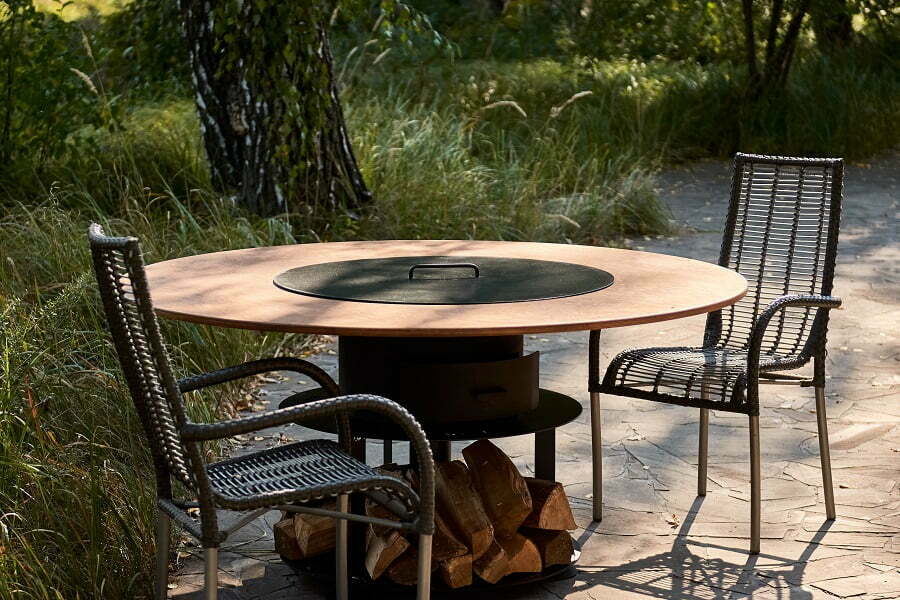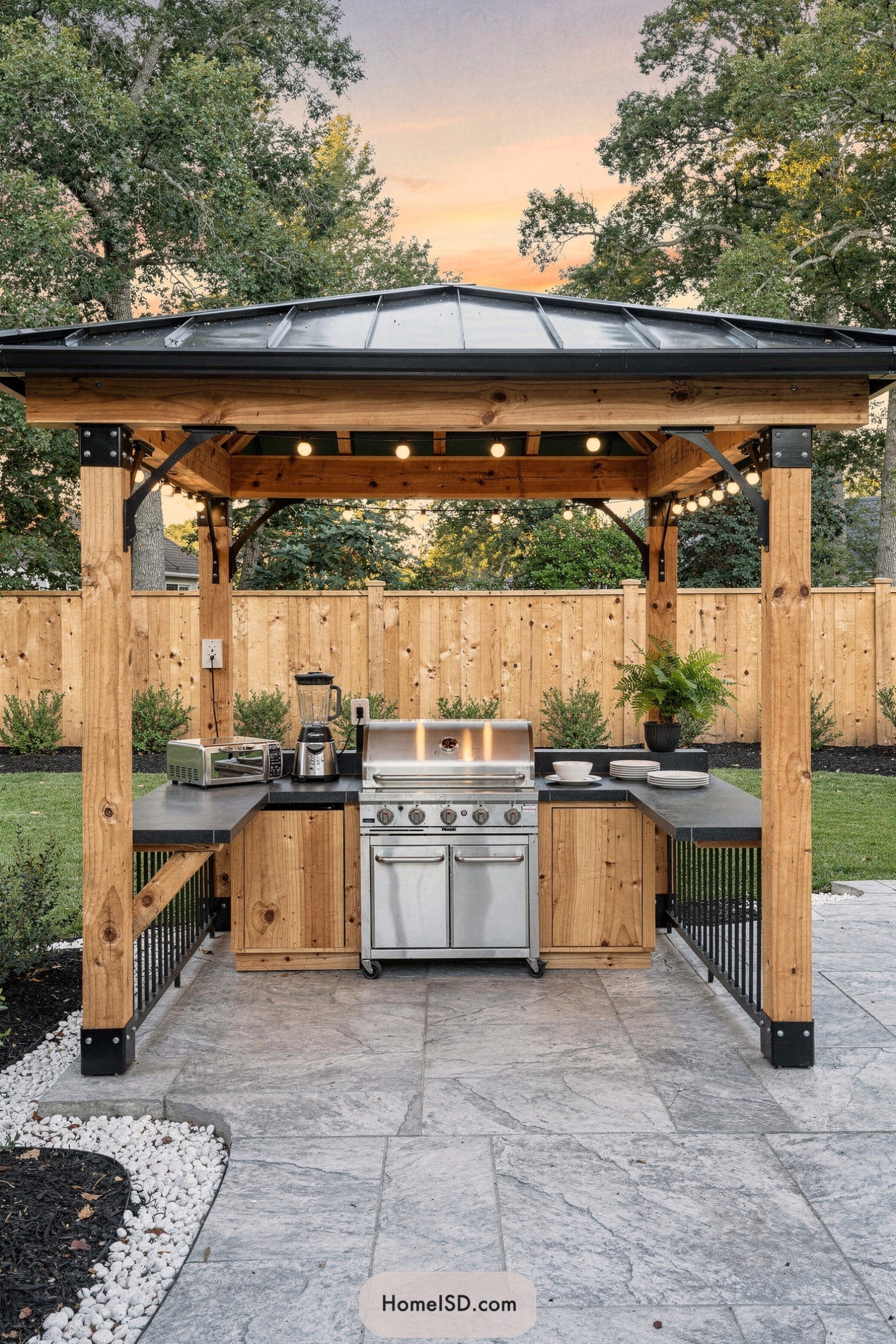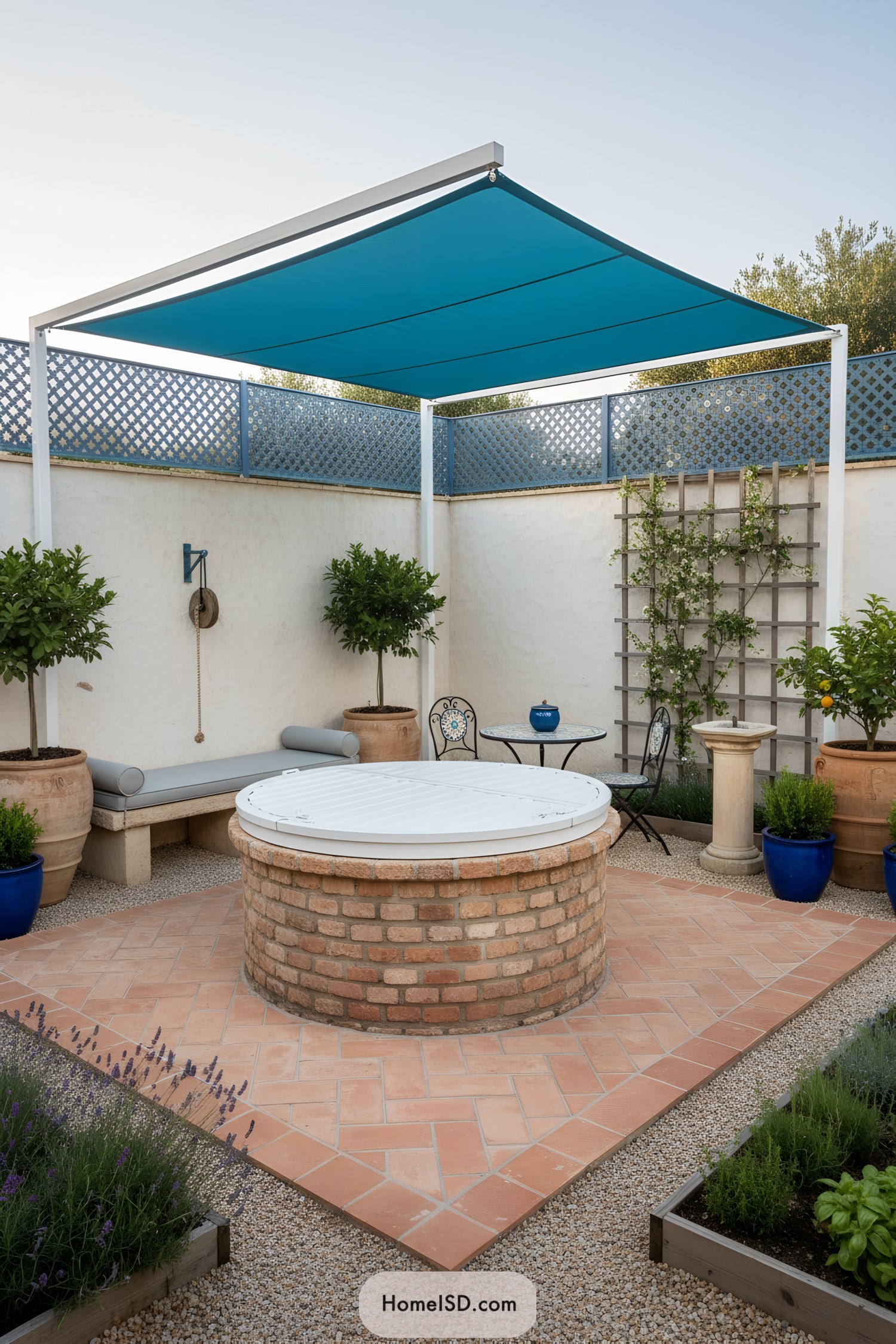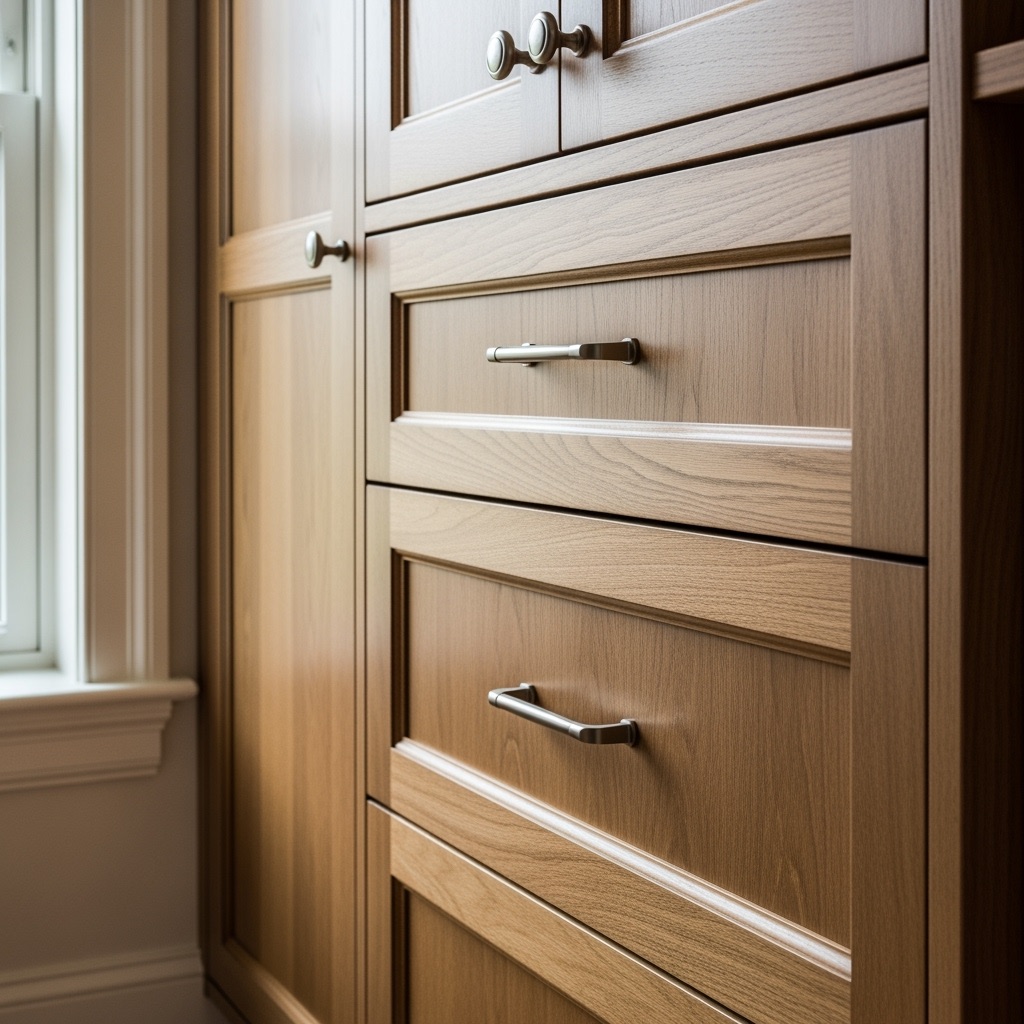Last updated on
You can put a portable fire pit on a wood deck or grass but the crucial thing is to ensure the ground and any cover is protected from fire.
It might be a convenient idea to put a portable fire pit on your deck (even if it’s covered) or grass in your backyard. But it is crucial to understand and ensure that you do not damage the floor or grass with heat, fire, and hot ashes from the pit.
There are several ways to safely put a fire pit on a wooden deck or grass and we will discuss them shortly.
Use a Fire Pit Stand

You must use a stand when burning a fire pit on a wooden patio. If you plan to burn for more than an hour, using pavers under the stand is the best way to make sure your deck stays beautiful and stays safe. The stand will still raise your fire pit, allowing cooler air to circulate under it.
You should always use stands when using your fire pit while burning on green grass. On beaches, you’re usually safe to use your fire pit without the stand, but if you don’t clear a level surface on the sand, sand can obstruct lower vent holes of the stove. We recommend using a stand when using your fire pit in sand to provide enough space surrounding the fire pit’s lower vents.
You should always stand your fire pit when using it. Otherwise, there could be some damage even to the concrete surface.
Stone, pavers, and gravel are all safe to use in fire pits. You should remove any dry debris before using your fire pit.
You should add the stand to ensure you can use your fire pit on any surface without worrying if it might harm the ground below. When using your fire pit, place it on a level surface and then center it in the middle. Start the fire pit and use it as usual.
Using Fire Pits on Grass
Fire pits should never be operated on grassy areas. If you’re going to burn something, make sure it’s on a non-combusting surface. Also, make sure there aren’t any sparks or embers falling onto the ground.
Fire pits should be used safely. You must make sure there aren’t any flammable materials around the fire pit. You need to prepare the ground before you start building the fire pit. Use a temporary barrier between the fire pit and the grass. You can use paving stones or a fire pit safety base.
Be careful when removing the paving stones. You should leave them there until you’re ready to put the cover back on. Steel heat shields work well because they have four supports keeping them off the ground. This allows airflow and eliminates pressure on the grass.
Be sure to soak the grass around the fire pit to protect your lawn from the heat radiating off the fire pit. Apply water to the grass in close proximity to the fire pit to prevent damage to the grass.
The Best Way to Put a Fire Pit on Grass
Fire pits should be placed on concrete, brick, or stone. Grass should never be used as a base for a fire pit. A fire pit should always be placed on a flat surface.
Wetting the grass is the cheapest way to avoid damage to your lawn (or the alternative). You should place the fire pit in a different spot every time you use it. Compression occurs when there is too much heat in one area, causing the soil to compact together. Moving the fire pit around ensures that it won’t be in an area where compression could occur.
Putting a Fire Pit on a Wooden Deck
Fire pits require proper placement over non-combustibles. They provide safety by keeping people away from the flames. Fire pits should be at least 24 inches high. Guests need space to move around them. Loose combustibles shouldn’t be kept near them.
Can You Put a Fire Pit Under a Covered Patio?
You can have a natural gas or propane fire pit underneath a covered patio if the overhanging height of the ceiling meets code requirements for distance from appliances. This is usually 80″ high. Check your appliance manual to see what the minimum clearance requirement is.
Woodburning fires produce thicker smoke and embers that could be dangerous when contained by a covered patio roof. Smokeless fire pits, propane, and natural gas fires do not produce smoke or embers and are therefore safer for use under a cover than wood-burning fires.
Putting a Fire Pit Under a Pergola
A fire pit should never be placed under a pergola because sparks could cause damage to the structure. Gas fire pits are much safer than wood ones. Keep the required distance away from walls and ceilings when choosing a location for a fire pit.
What Makes a Fire Pit Safe?
Fire pits should be made of durable materials such as steel or cast iron. Propane or natural gas fire bowls are safer than wood-burning fire pits because they do not produce sparks or embers. Fire pits should be inspected regularly by an experienced professional.
The Takeaway
Fire pits are an excellent way to enjoy the outdoors without being too close to the house. You should use them when you want to be outside and enjoy the scenery. However, it is important to ensure safety. Making sure that a fire pit is placed on a non-combustible and level surface is the most crucial thing when using it on a deck or grass.
FAQ
The best thing to put under a fire pit on grass is sand, dirt, or pavers. If you don’t have either of these options, then you may consider placing rocks or bricks under the fire pit.
Put it as far from the house as possible. The closer you keep it to the house, the more likely it is to catch fire.
Fire pit mats help protect your flooring from hot coals. They also prevent the spread of ashes.
Recap



